How to build a cinder block house?
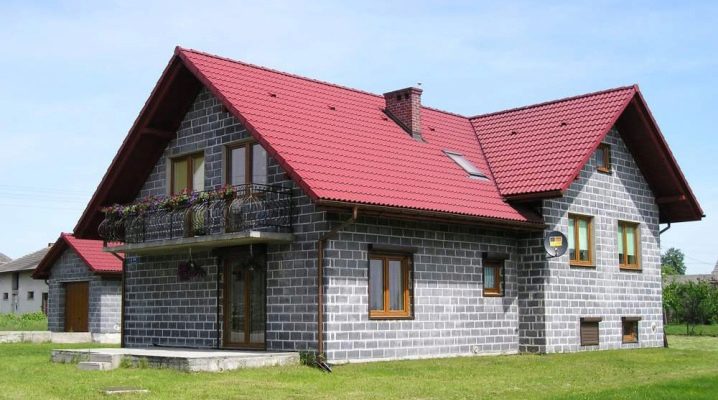
Many of those who want to build a durable and reliable house choose cinder block as the main wall material. Such raw materials are famous for their strength characteristics and pliability in work. Today we will get acquainted with the features, advantages and disadvantages of houses built from cinder block.


Peculiarities
It's no secret that the current range of building materials is replete with its diversity. For the construction of a residential building, it is possible to use not only wood or brick, but also practical block elements. They are manufactured using different technologies and have different performance characteristics. From a number of such products, cinder blocks should be distinguished.
This material is a special building stone.
Its manufacture is carried out in special forms. The binder of cinder blocks is concrete. For filling, various components are used - it can be environmentally friendly expanded clay, slag, bricks and other similar elements.
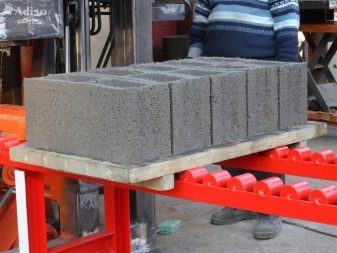
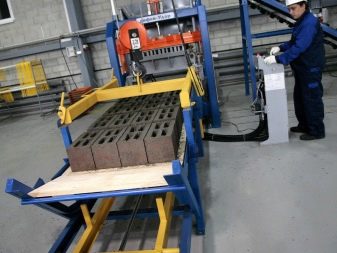
Houses made of cinder blocks are distinguished by a long service life. Such buildings will easily stand for many years. At the same time, such a dwelling does not have to be regularly looked after, as, for example, with buildings made of natural wood.
Cinder block houses are often built by the owners themselves, without the involvement of experienced craftsmen. Experts say that even an inexperienced user who has not previously encountered such processes can cope with such work. Of course, if a person doubts his abilities or is afraid to make serious mistakes, it is better for him to call professionals.
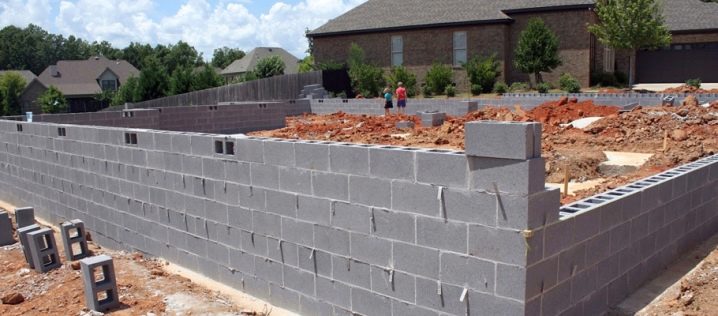
Some people make cinder blocks at home. For this, inexpensive and affordable raw materials are usually used. In order to obtain high-quality and strong materials as a result of manufacturing, it is very important to adhere to all the required proportions. Please note that it is impossible to build a house from fragile and low-grade blocks, as this will affect the durability and quality of the entire building as a whole.
This material is versatile. They often turn to him for the manufacture of various components of the site, such as a gazebo, a small extension, a flower bed or a fence. Also, various outbuildings for household purposes are made from cinder block. Such structures are made easily and quickly, so it will not be difficult to cope with such work.

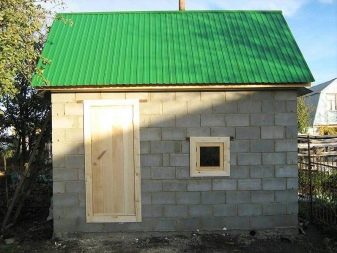
Advantages and disadvantages
Cinder block houses are found with an enviable frequency. It is difficult to confuse them with any other buildings, since they are distinguished by their solid appearance, which speaks of their durability and reliability. However, if you decide to build a dwelling from cinder blocks, you need to familiarize yourself with its advantages and disadvantages.
Nowadays, many users opt for slag blocks, since they are recognized as fireproof, which is very important for any private house. Cinder blocks not only do not provoke the appearance of a flame, but also do not support the combustion that has already arisen.
Cinder block buildings boast a long service life. They do not suffer from strong wind loads or hurricanes. Of course, such useful characteristics should be supported by high-quality reinforcement of materials.
Usually, in this case, they turn to steel bars, which can make the structure more wear-resistant.
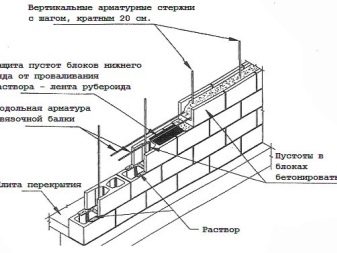

Cinder block houses are easily repaired, as evidenced by the reviews of the owners of such structures. For example, you can easily patch up unexpected cracks. To carry out such work, you do not have to spend a lot of effort, time and money.
Cinder block houses are built very quickly. This is due to the fact that such building materials are impressive in size. As mentioned above, even an inexperienced master who does not have a special education can build a house from such blocks. The main thing is to follow the instructions and not neglect any of the work steps.
Do not think that it will be possible to erect only the same type and template structures from the cinder block, which do not have any zest. In fact, you can build a very original structure with a non-standard configuration. To do this, you just need to show a little imagination and turn to people who are experienced in these matters.
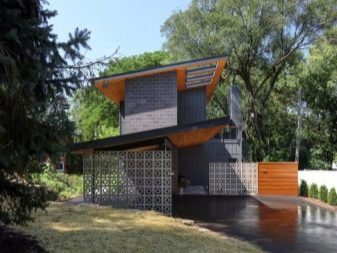
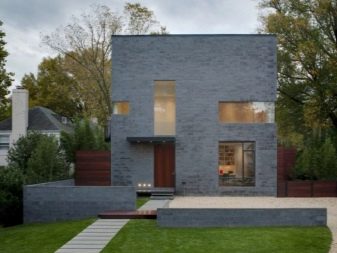
Carrying out construction work using cinder blocks will not cost the owners dearly. This fact is noted by many consumers who have significantly saved by choosing this material as a basis. Few people know that cinder blocks are made not only with the use of slags. Today, there are products that contain different components. Thanks to this, it will be possible to select the right raw material for any conditions.
Masters claim that during the construction of a cinder block house, very little cement is used, which also makes the process cheaper.
Despite its size, the cinder block, as a rule, has very little weight. This is due to the fact that in terms of density, such material is inferior to brick. Thanks to this property, blocks can be used if you are building a house on a lightweight foundation.
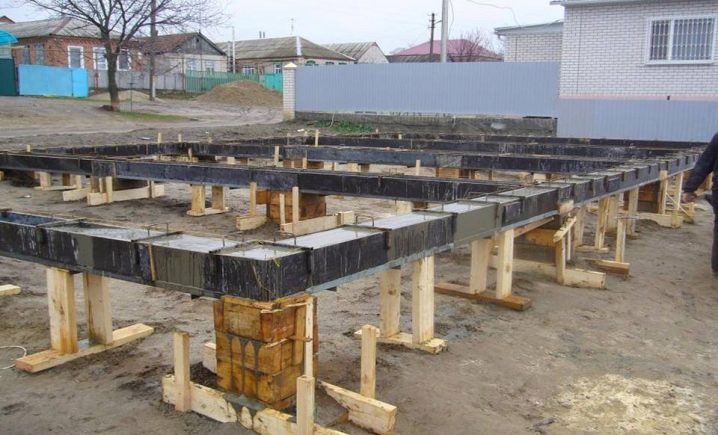
The slag block is a product that does not attract rodents or insects. Such structures do not need to be treated with protective and antiseptic solutions, since they are not susceptible to the formation of mold or mildew. Such residential buildings are not afraid of low temperature values, which indicates the frost resistance of cinder blocks.
It is possible to transport blocks not only using pallets. It is permissible to simply store these materials in a truck / trailer.
Houses from them can boast of good noise insulation characteristics. They usually do not hear annoying sounds from the street.
Slag blocks are heat-consuming materials.
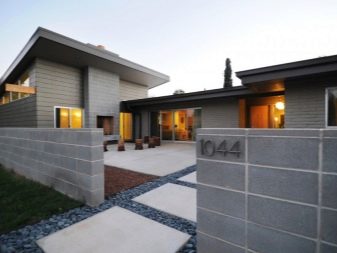
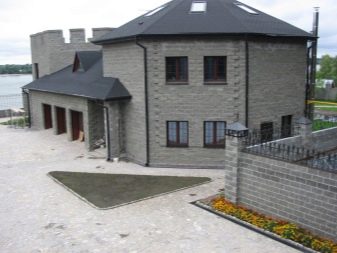
Unfortunately, cinder block buildings have some disadvantages. For example, some types of cinder blocks are heavy. Heavyweight options are also sold today, which are difficult to handle. In many cases, such materials are handled using special techniques.
Before starting building a house, it is important to remember that unfinished block buildings do not look very attractive. If you have not purchased a special decorative material, then you will have to decorate the home to make it look more aesthetically pleasing.
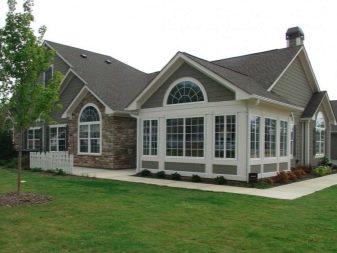
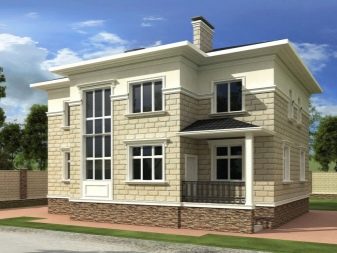
If you have chosen a cinder block for building a house, then you need to be prepared for the fact that the installation of pipes and cables will not be the easiest. For this reason, craftsmen often have to use special devices during construction to facilitate this task.
If during construction you use a hollow cinder block, then later you will have to fill it with slagto ensure high thermal insulation performance. Carrying out such work is considered difficult. In addition, over time, such backfill can settle, and voids appear in the materials again.
It will not be possible to build a multi-storey dwelling from such material. This is due to the fact that overly heavy structures can reduce the density and strength of materials.
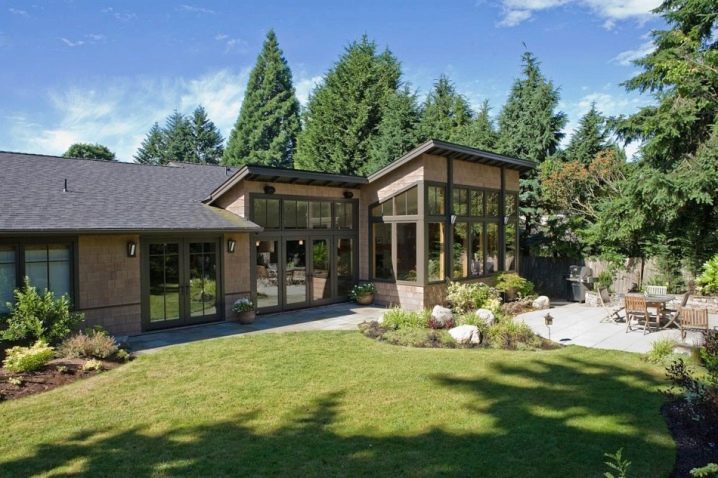
It is not necessary to decorate cinder block walls with simple plaster.Turning to such a design can lead to the fact that the material simply loses the density of the top layer, and it falls off.
Like the foam block, cinder blocks do not have the most correct geometry. Because of this, during construction, they have to be filed and sanded to form smooth surfaces.
There are still fewer minuses for cinder block houses than pluses. Many problems can be avoided by adhering to the appropriate technology and using quality (and suitable) materials / tools.
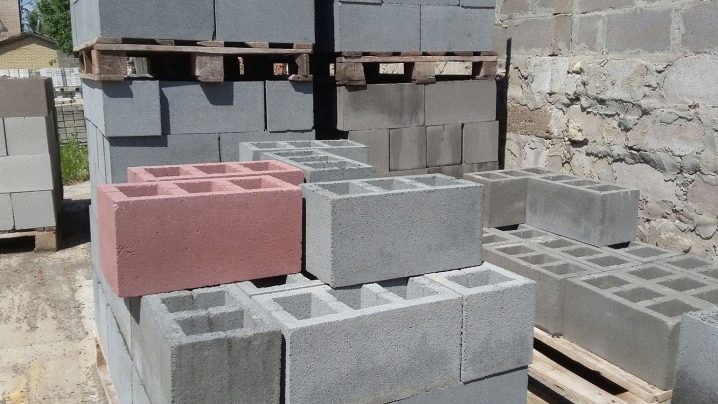
Types of material
As mentioned earlier, a material such as a cinder block has several varieties, each of which has its own characteristics and rules of use. Let's take a closer look at such products.
Hollow and full-bodied
Both of these block options are in great demand. For example, common full-bodied varieties are most often used in the construction of foundation structures, columns of various modifications and load-bearing foundations. What's more, hollow blocks are great for building basements.
These materials are characterized by remarkable strength characteristics and can withstand more severe loads than hollow versions.
As for hollow blocks, they are usually purchased for the construction of partitions and walls. They have a modest weight, so they do not weigh down the overall base of the dwelling at all.
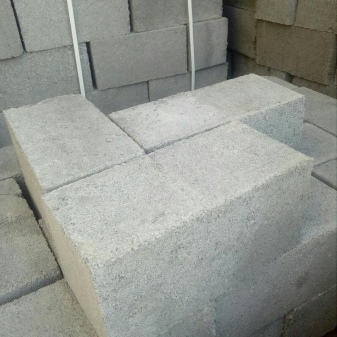
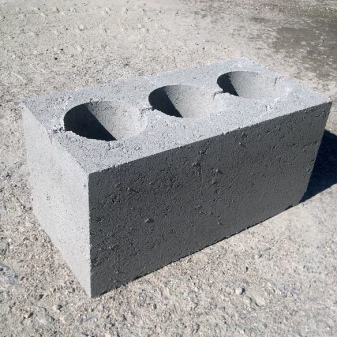
Decorative
Such cladding materials have occupied their niche in the market quite recently. They are complemented by a special decorative coating, which can be located both on one and on both sides of the block. This additional layer can repeat all sorts of textures (for example, stone or plaster). In addition, in this way it will be possible to protect the blocks themselves from such negative factors as moisture and dampness. If you have chosen decorative materials for construction, then you can refuse the exterior decoration of the building.
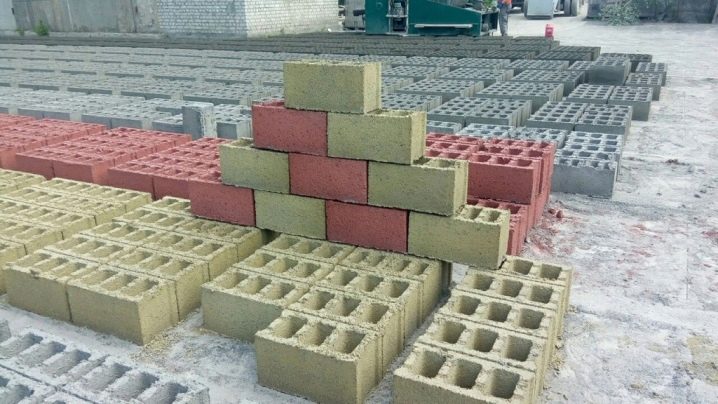
Partition
If you moved on to the construction of partition structures in a block house, then you need to use the indicated types of materials. Such specimens differ in that they can be used to build even and neat walls, while saving on mortar. It should also be noted that partition cinder blocks are lightweight, and their installation is quick and easy.
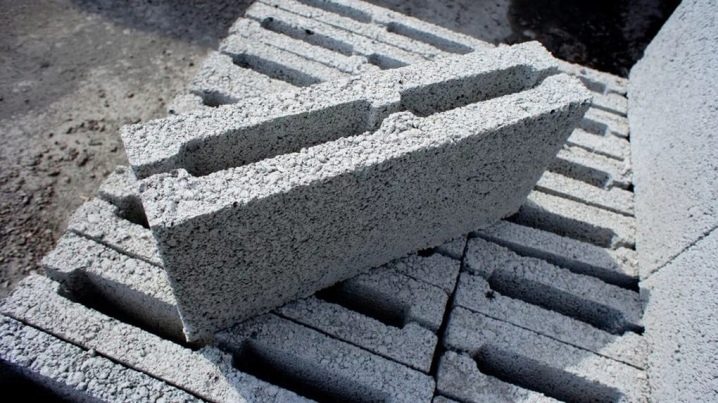
Fundamental
Foundation blocks are also called building stone. These materials have high strength and durability. Over time, such blocks do not give serious shrinkage, and also do not collapse, which indicates their increased reliability. If you are laying cinder blocks on a sufficiently strong and stable base, then you should remember the need to use reinforced concrete tape. Its layer should be at least 1.5 cm.
Experts advise to pay attention to the fact that the walls of cinder block foundation structures must be insulated with heat and vapor with special materials.
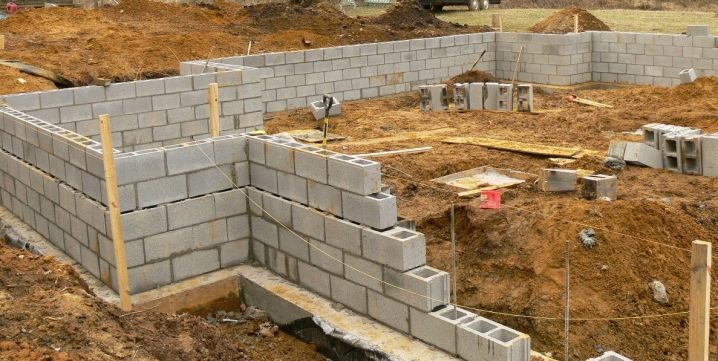
Chipped and torn
Not so long ago, the building materials market was replenished with original slag blocks with a decorative surface with an imitation of torn / chipped bricks. These options are most often used when decorating various buildings and fences.
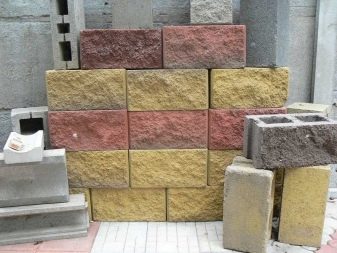
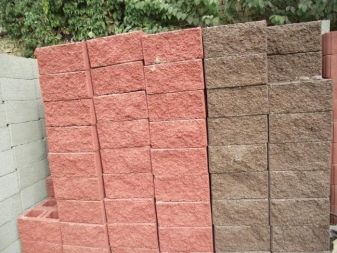
Color
There is also a colored version of cinder concrete on the market. Fences, pediments or pillars are most often constructed from such material. The required shade of this material is achieved at the stage of its manufacture.
Usually red brick chips or chalk of different colors are mixed for this purpose.
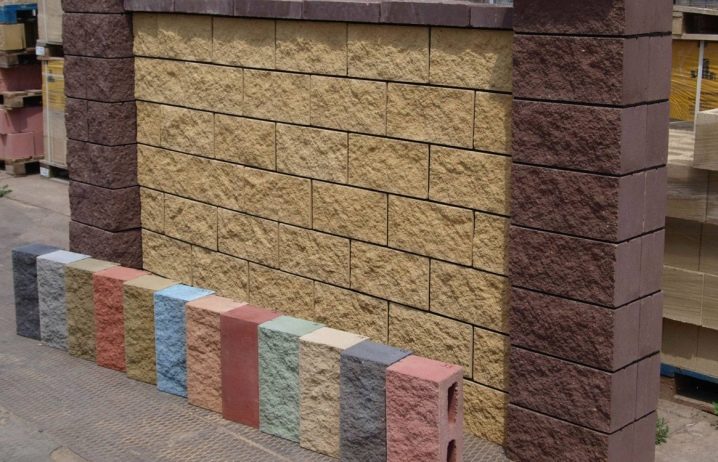
Slag blocks differ from each other and their main components.
Slag based
The properties and characteristics of such blocks primarily depend on the properties of the feedstock. This mainly refers to the environmental safety of materials (meaning the presence of toxic substances in their composition).The specified parameter should be taken into account when choosing slag blocks.
These materials are distinguished by high thermal insulation qualities. As for the service life, it is the same as that of a brick. But here you need to start from what kind of filler is present in the material. Slag-based blocks will last a very long time and will not cause problems if they are correctly laid and finished.
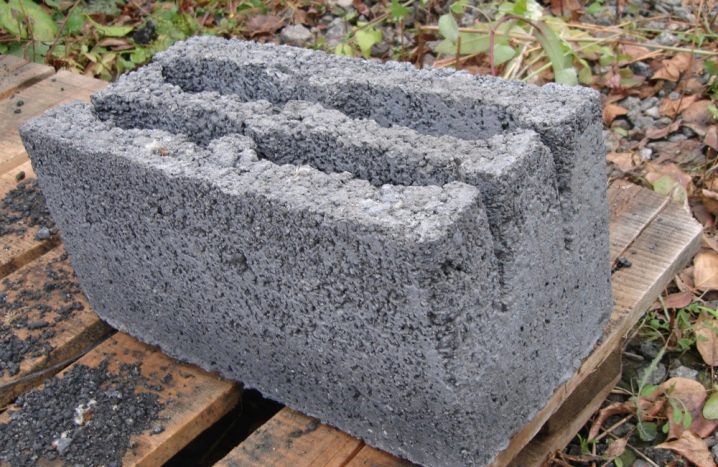
Arbolitovye
Blocks based on wood concrete are in great demand today. Such materials are in great demand, as they have excellent thermal insulation characteristics. However, such products have one serious drawback - they cannot boast of a sufficiently long service life. Of course, in the manufacturing process, wood concrete blocks can be made more durable, but this usually affects their environmental friendliness. Such negative changes are due to the fact that special substances are added to the usual composition that cannot boast of a natural origin.
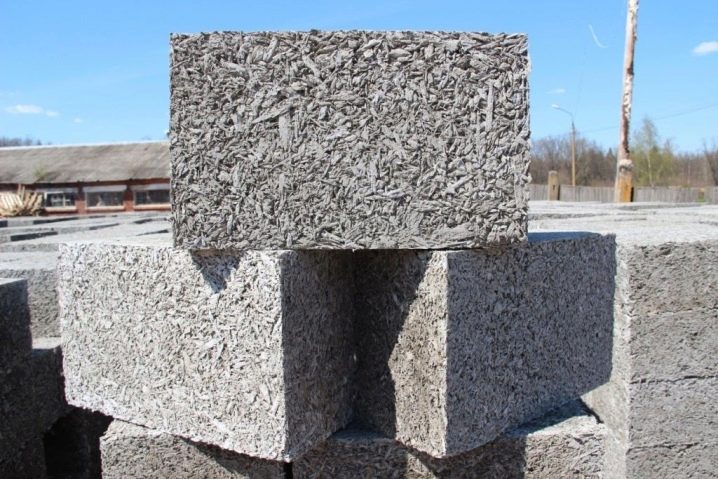
Expanded clay
Blocks based on expanded clay are rightfully recognized as the safest and most environmentally friendly. Such products are famous for their excellent thermal insulation properties and durability.
It should be borne in mind that the popularity of such blocks is explained not only by their environmentally friendly base. These varieties are lightweight and have multiple voids in their structure. Most experts recommend using just such types of cinder blocks for building a house. Currently, more than 50% of homes in Europe are made from similar elements.
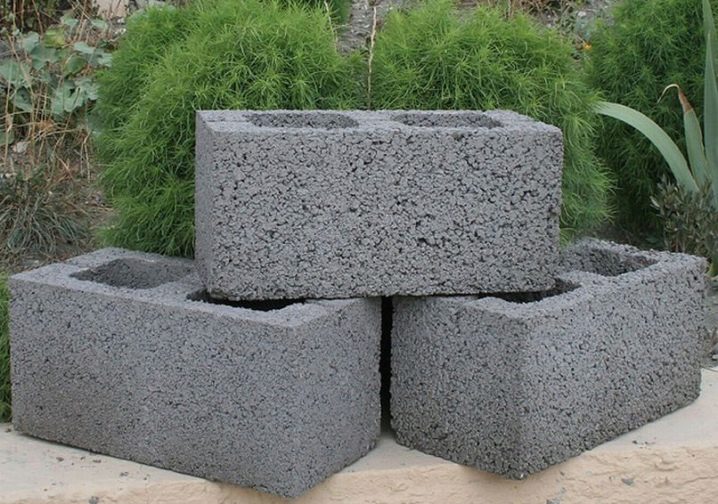
Design
It's not a secret for anyone that the competent drawing up of a house project is a very important stage, which cannot be excluded. For this, it is recommended to contact a specialist. If you are on a budget, then you can try to do this work yourself.
The project must necessarily reflect:
- dimensional parameters of the future home;
- number and dimensions of windows / doors and other similar components.
Unfortunately, the presence of such a project will not allow you to make changes regarding the layout, which are very often referred to by the owners of the future home.
But it will be easier and more convenient for you to calculate the volume and specific type of materials, as well as calculate what time it will take to build a cinder block house.
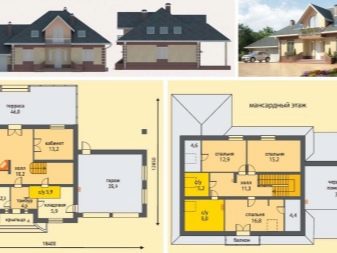
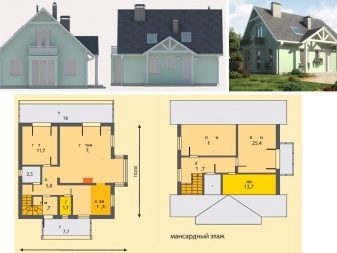
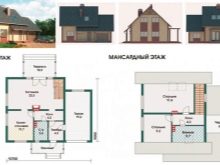

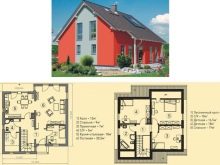
Payment
It is impossible to proceed to the construction of a house without calculating the required amount of materials.
To determine how many of them you need, you need to adhere to the following algorithm:
- you need to take the dimensional parameters of the height and length of the wall and multiply them;
- subtract the area of window and door openings from the resulting value;
- identical calculations are performed for the remaining walls of the cinder block dwelling.
Next, you need to correctly determine the thickness of the walls. This value will be determined by the specific way the blocks are laid and the climate in the region where the work will be carried out. In areas where winters are rather severe, the thickness of the walls should not be less than 60 cm. And in those regions where moderate temperatures prevail, it is permissible to build walls less thick.
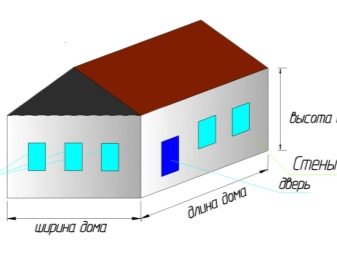
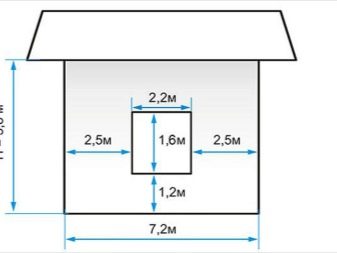
After that, you need to proceed to calculating the area of the used cinder block (meaning the outer edge of the elements).
The building material produced at the plant has the following dimensions (standard):
- width - 190 mm;
- length - 390 mm;
- height - 188 mm.
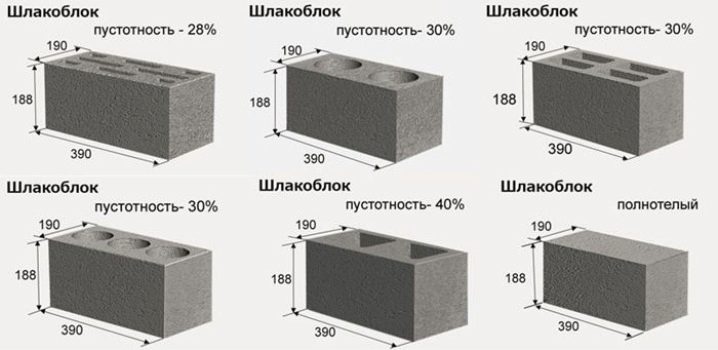
If you are going to lay the cinder blocks with a wider half outward, then the area of the individual elements will be 0.0741 sq. m (you need to multiply 190 by 390). If the materials are planned to be laid with the narrow side, then the required value should be calculated differently - we multiply 190 by 188. The result will be the required area of the building stone - 0.03572 sq. m.
Next, you should determine how many blocks will be needed to install 1 m2 of a wall. To do this, you need to divide the area of the site by the previously calculated area of the block.The result will be the value we need. The final calculations will be easy, since you will know absolutely all the values of the structure and the number of cinder blocks for building walls.
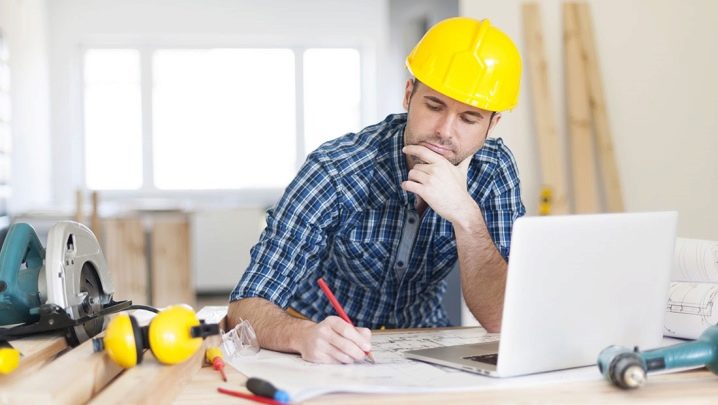
Construction
You can build a cinder block house with your own hands. You don't need to be an experienced craftsman to do this. The main thing is to follow the step-by-step instructions. Let's consider step by step how to build such a dwelling.
Before moving on to construction work, you will need to stock up on a number of necessary tools:
- trowel;
- level;
- plumb line;
- a tub;
- shovel;
- pickaxe;
- bucket;
- special stretchers;
- protective equipment (respirator, gloves, etc.).
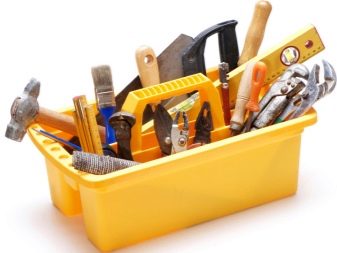
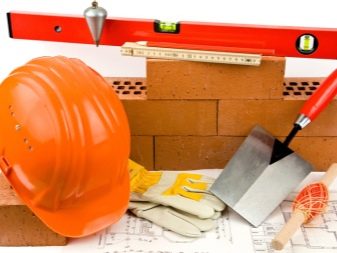
If you have purchased all the necessary devices, you can safely proceed with the construction of a cinder block house.
Main steps:
- The first will be earthworks. You will need to level the area where the house is planned to be erected.
- You will need to make a foundation. In most cases, people build a tape version, since it is easy to manufacture, but it turns out to be strong and reliable.
- After pouring, you need to let the concrete take hold. This usually takes about 4 weeks. After this period, you can continue construction work.
- When the foundation reaches the required strength level, you can lay cinder blocks on it. Laying should start from the corners - this is the only way the walls will turn out to be smooth.

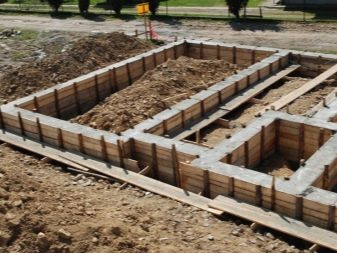
- Place the blocks in the corners and level them using a plumb line and level.
- Next, pull the string between the corners, which should be located on the outer corner of the blocks.
- When laying new parts, you should pay attention to the fact that they do not move the string, otherwise the walls will not work out even.
- In order to hold the individual slag blocks together, it is necessary to use a cement slurry. Its thickness when laying should be from 1.5 to 2 cm. If you put thicker layers, the walls will turn out to be cold, since cold "bridges" are formed in them.
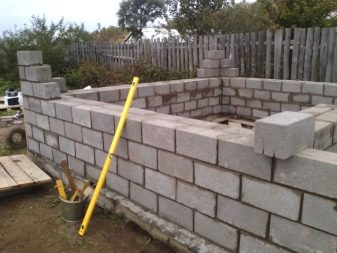
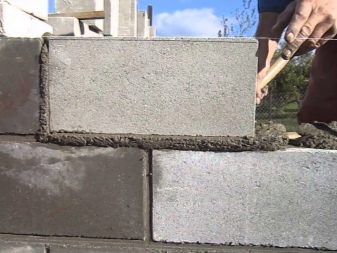
- When stacking blocks, use a mallet or rubber mallet. With the help of such devices, you will be able to easily and seamlessly trim the already laid elements.
- When you get to the window and door openings, you will need to use special reinforced concrete lintels. They are distinguished by high strength, and also work well for bending, so the walls with them are quite strong.
- After completing the construction of wall structures, you need to cover them with a special water repellent to protect them from dampness and moisture. After that, you can proceed to the design of the roof.
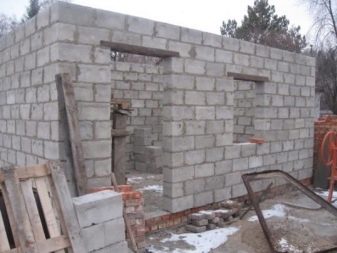
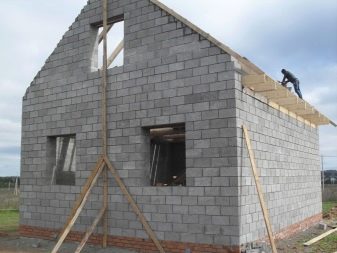
Recommendations
For cinder blocks, the same fasteners are usually used as for foam concrete. However, most experienced craftsmen recommend using a special chemical anchor. It is more expensive than a regular dowel, but will provide a more reliable fastening of materials.
When installing cinder blocks, it is important to ensure that the joints between them are not too wide, since through them the heat will subsequently leave the house outside.
The outer surfaces of the cinder block walls must be covered with moisture-proof and heat-insulating materials.
Do not neglect these works.
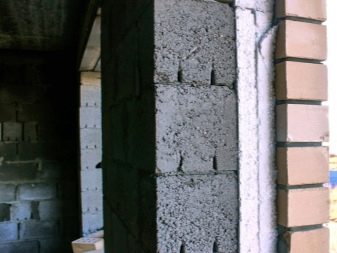
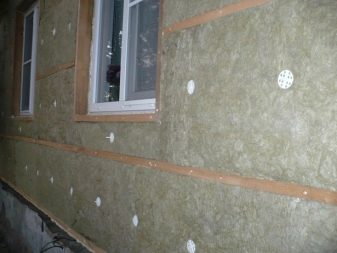
Keep in mind that homemade cinder blocks, although they are cheaper, can later "behave" completely unpredictable, so it is better to purchase materials made at the factory.
When laying cinder blocks, special attention should be paid to the first row. The quality and evenness of the subsequent rows will depend on him.
Many users are interested in what materials can be used to decorate the outer walls of cinder block houses. It is permissible to mount siding panels, brick, decorative stone or wood on such a base.
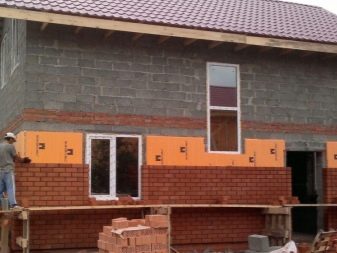
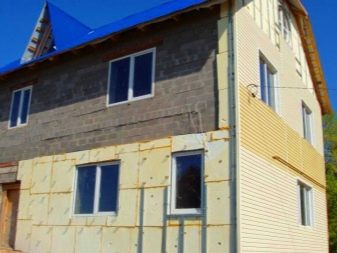
Successful examples
From a cinder block, you can build a chic two- or three-story cottage with a high angular roof with several slopes.It is permissible to decorate such a structure with a combination of red and white bricks, and use dark gray tiles as a roof.
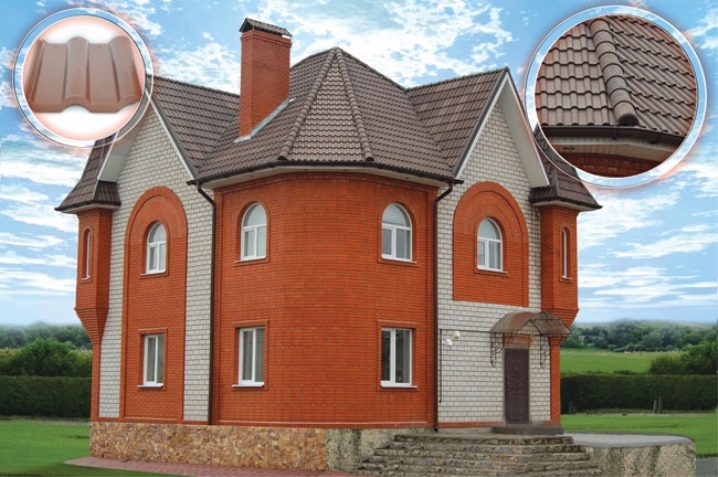
Such blocks will make a spectacular one-story L-shaped house with a wooden paneling or bricks. A contrasting soft roof can be placed on the roof, and the lower part of the house can be trimmed with white panels.

An unfinished cinder block house with two floors will look stylish if you cover it with a high, cone-shaped roof in a dark shade, install large windows with black frames, and put out street lamps in Gothic style on the lawn in front of the building.
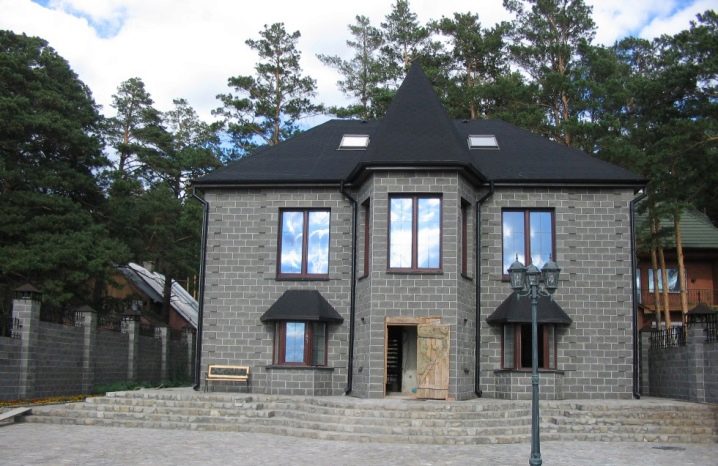
For information on how to make a cinder block at home, see the next video.













The comment was sent successfully.